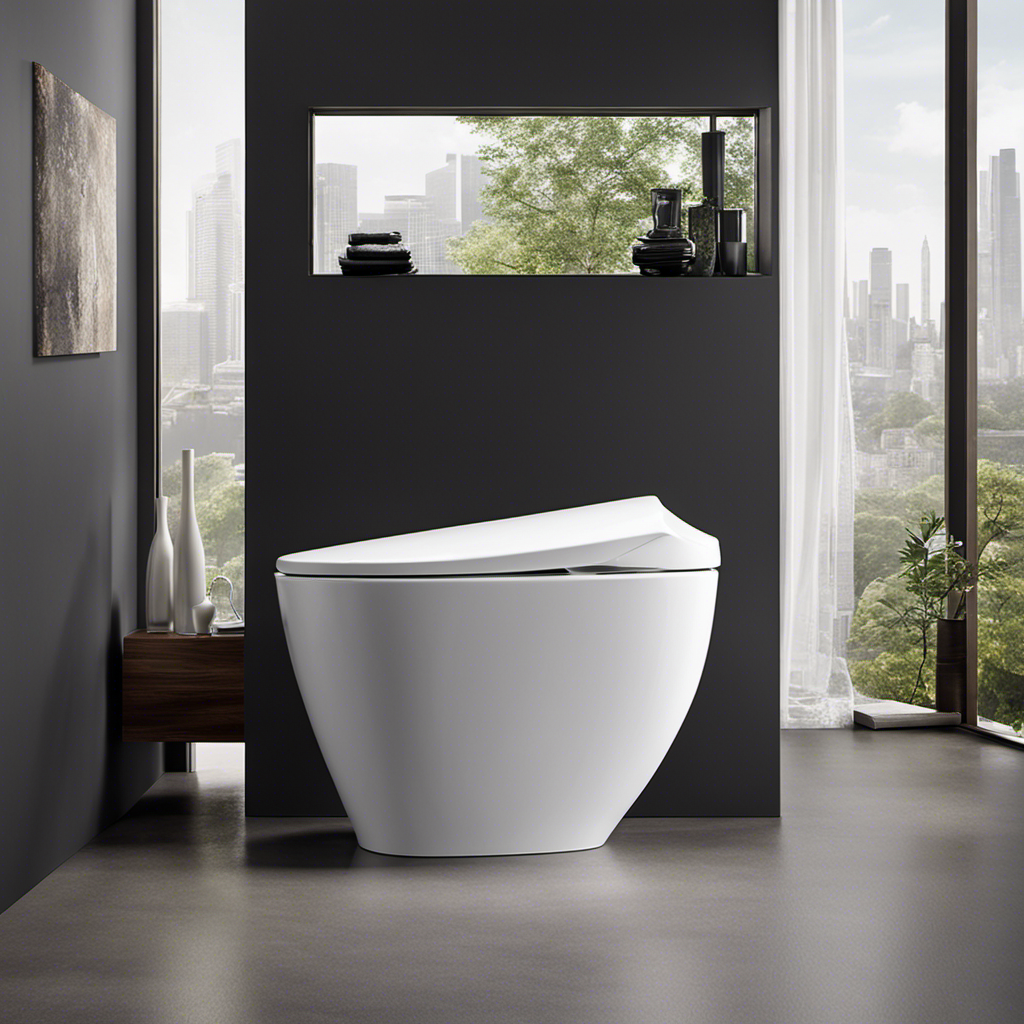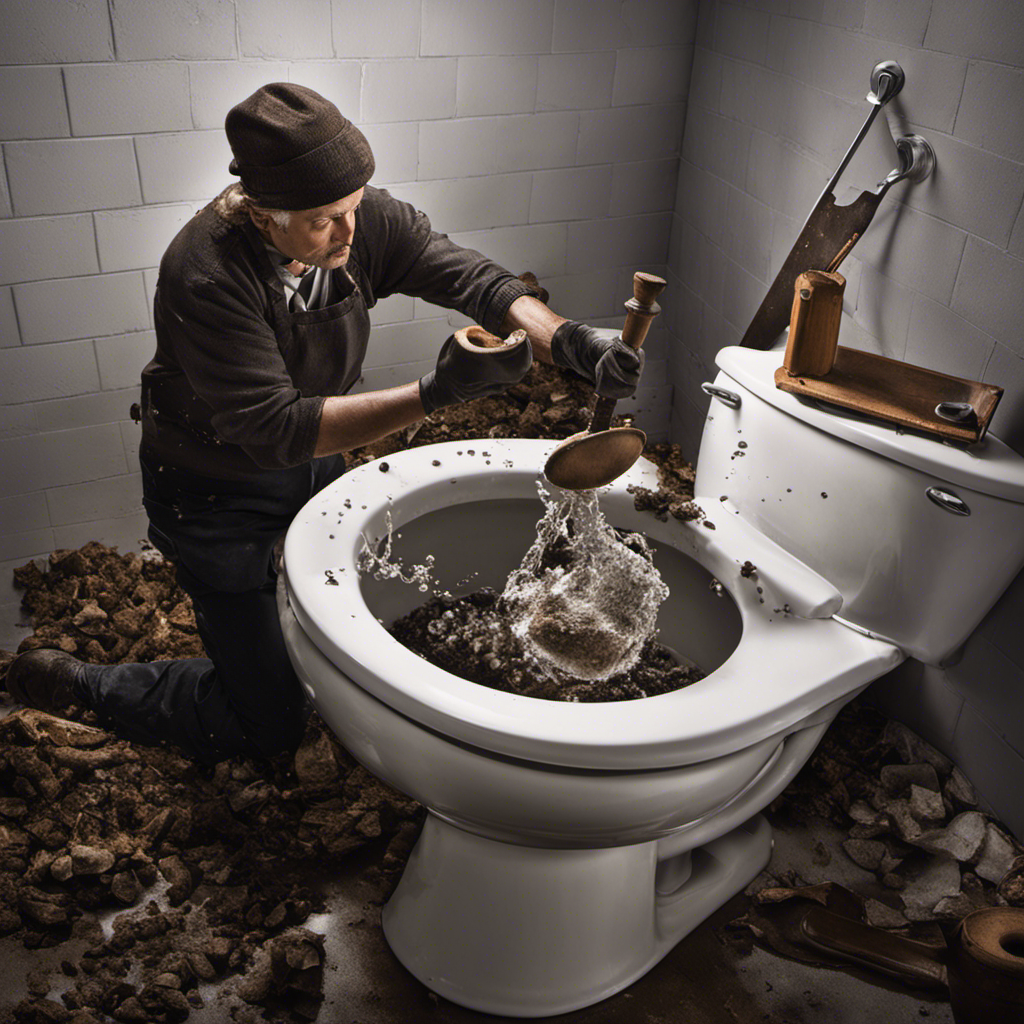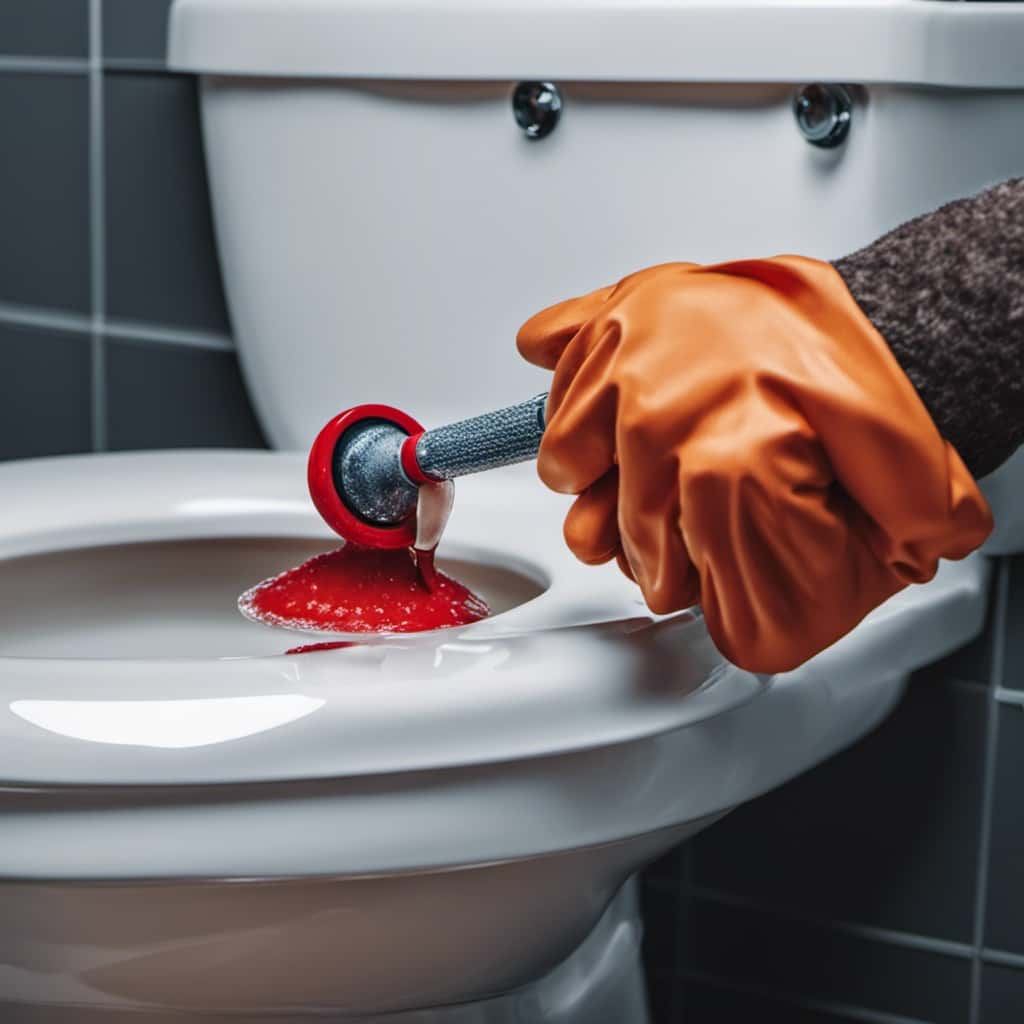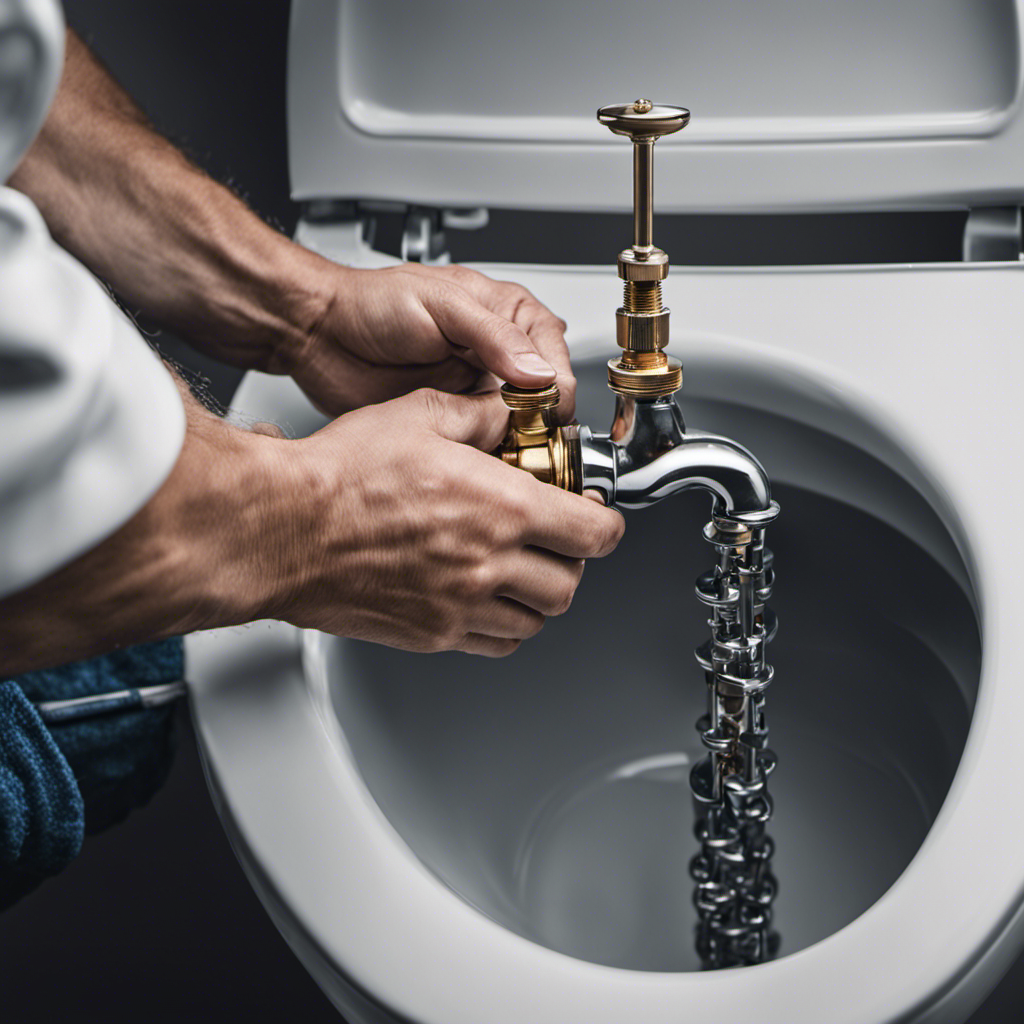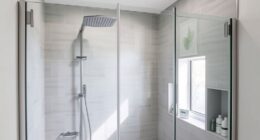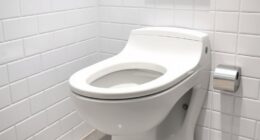Did you know that over 56 million Americans have a disability? That’s where Ada toilets come in.
If you’re wondering what an Ada toilet is and how it can benefit you, you’ve come to the right place. In this article, we’ll explore the history, requirements, and features of Ada toilets.
We’ll also guide you through the installation process and provide tips on maintaining and cleaning these specialized toilets.
By the end, you’ll have all the information you need to choose the right Ada toilet for your needs.
Key Takeaways
- ADA toilets were developed in 1990 to improve accessibility for individuals with disabilities.
- ADA-compliant toilets have specific requirements for seat height, clear floor space, grab bar height, flush controls, and toilet paper dispenser height.
- ADA toilets provide improved accessibility, comfort, and independence for individuals with disabilities.
- When choosing an ADA toilet, consider factors such as height, seat size, and accessibility features, and look for ADA-compliant models from popular brands like Kohler, TOTO, and American Standard.
The History of Ada Toilets
Now let’s dive into the history of ADA toilets and how they have evolved over the years.
The invention timeline of ADA toilets dates back to 1990 when the Americans with Disabilities Act (ADA) was enacted. This legislation aimed to improve accessibility for people with disabilities in public spaces, including restrooms.
ADA toilets were specifically designed to meet the needs of individuals with disabilities, providing them with greater independence and convenience. These toilets feature specific dimensions and fixtures, such as grab bars, raised seat heights, and larger clearances, to accommodate individuals who use mobility aids or have limited mobility.
The impact on accessibility has been significant, as ADA toilets have revolutionized the way people with disabilities access and use public restrooms, promoting inclusivity and equal rights for all.
Understanding Ada Toilet Requirements
Understanding the requirements for an ADA-compliant toilet can be helpful when designing or choosing a toilet for individuals with disabilities. One of the key requirements is the toilet seat height. According to the ADA guidelines, the toilet seat height should be between 17 to 19 inches above the finished floor. This ensures that individuals with mobility impairments can easily transfer onto and off of the toilet seat.
To further illustrate the requirements, refer to the table below:
| Requirement | Measurement |
|---|---|
| Toilet Seat Height | 17-19 inches |
| Clear Floor Space | 60 inches |
| Grab Bar Height | 33-36 inches |
| Flush Controls | 44 inches maximum |
| Toilet Paper Dispenser | 19-26 inches |
Benefits of Ada Toilets
To fully appreciate the benefits of an ADA-compliant toilet, you’ll be able to experience improved accessibility and comfort for individuals with disabilities.
ADA toilets are designed with specific accessibility features that make them more user-friendly. These include a higher seat height, typically around 17 to 19 inches, which makes it easier for individuals with mobility issues to sit down and stand up.
Additionally, ADA-compliant toilets have grab bars installed on the sides for added support and stability. These grab bars are strategically placed to assist individuals with balance and maneuverability.
The flush controls are also located at a lower height, making it easier for individuals in wheelchairs to access them.
Overall, ADA toilets provide a safer and more comfortable experience for individuals with disabilities, enhancing their independence and dignity.
Common Features of Ada Toilets
One of the common features of ADA-compliant toilets is a higher seat height, which allows for easier use by individuals with mobility issues. This elevated seat height helps to minimize the strain on the knees and joints when sitting down or standing up. Additionally, ADA toilets often have a larger toilet seat to provide more comfort and stability.
Another important feature of ADA toilets is the flush mechanism. These toilets are equipped with a lever or push-button flush, which requires less effort to operate compared to traditional flush handles. The flush mechanism is designed to be easily accessible and user-friendly, ensuring that individuals with limited hand dexterity can easily flush the toilet without any difficulties.
To summarize, ADA-compliant toilets prioritize the needs of individuals with disabilities by incorporating features such as a higher seat height and user-friendly flush mechanisms. These design elements aim to enhance accessibility and promote independence in the bathroom.
| Common Features of ADA Toilets | |
|---|---|
| Higher seat height | Easier use for individuals with mobility issues |
| Larger toilet seat | Increased comfort and stability |
| User-friendly flush mechanism | Easy operation for individuals with limited hand dexterity |
How to Install an Ada Toilet
When installing an ADA-compliant toilet, make sure to carefully follow the manufacturer’s instructions to ensure proper installation.
Begin by measuring the rough-in, which is the distance between the wall and the center of the toilet’s drainpipe. ADA toilet dimensions require a minimum of 16.5 inches from the center of the toilet to any sidewall or obstruction.
Next, install the toilet flange, making sure it is securely fastened to the floor and aligned with the drainpipe. Place a wax ring on the flange to create a watertight seal.
Lower the toilet onto the wax ring, aligning the bolts with the mounting holes. Tighten the nuts onto the bolts, being careful not to overtighten.
Finally, connect the water supply line and test for any leaks.
Following these steps will ensure a successful installation of your ADA toilet.
Maintaining and Cleaning Ada Toilets
Make sure you regularly clean and maintain your ADA toilet to keep it in good working condition. Proper maintenance not only ensures the longevity of your toilet but also helps to prevent potential issues.
Here are some important steps to follow:
- Clean the toilet bowl using a mild cleaner and a soft brush.
- Check the flush handle regularly to ensure it is functioning properly.
- Inspect the toilet tank for any leaks or cracks.
- Clean the toilet seat and replace it if necessary.
- Adhere to ADA toilet regulations by installing the appropriate toilet accessories, such as grab bars and raised toilet seats.
Choosing the Right Ada Toilet for Your Needs
To choose the right ADA toilet for your needs, consider factors such as height, seat size, and accessibility features.
When comparing different brands of ADA toilets, it’s important to look for models that meet the specific requirements outlined in the Americans with Disabilities Act (ADA) guidelines. These guidelines ensure that the toilets are accessible and comfortable for individuals with disabilities.
Some popular brands to consider include Kohler, TOTO, and American Standard, which offer various ADA-compliant toilet options.
Additionally, it’s helpful to keep in mind some troubleshooting tips for common issues with ADA toilets. For example, if you experience a weak flush, check the water level in the tank and adjust if necessary. If the toilet is constantly running, replace the flapper or adjust the fill valve.
Conclusion
In conclusion, choosing the right Ada toilet for your needs is crucial in ensuring comfort and accessibility in your bathroom.
By understanding and meeting the Ada toilet requirements, you can ensure that your toilet is compliant with the necessary regulations.
Installing and maintaining an Ada toilet may require some effort, but the benefits are worth it.
So, don’t let the grass grow under your feet – make sure to choose an Ada toilet that meets your specific requirements and enjoy the convenience and accessibility it offers.

